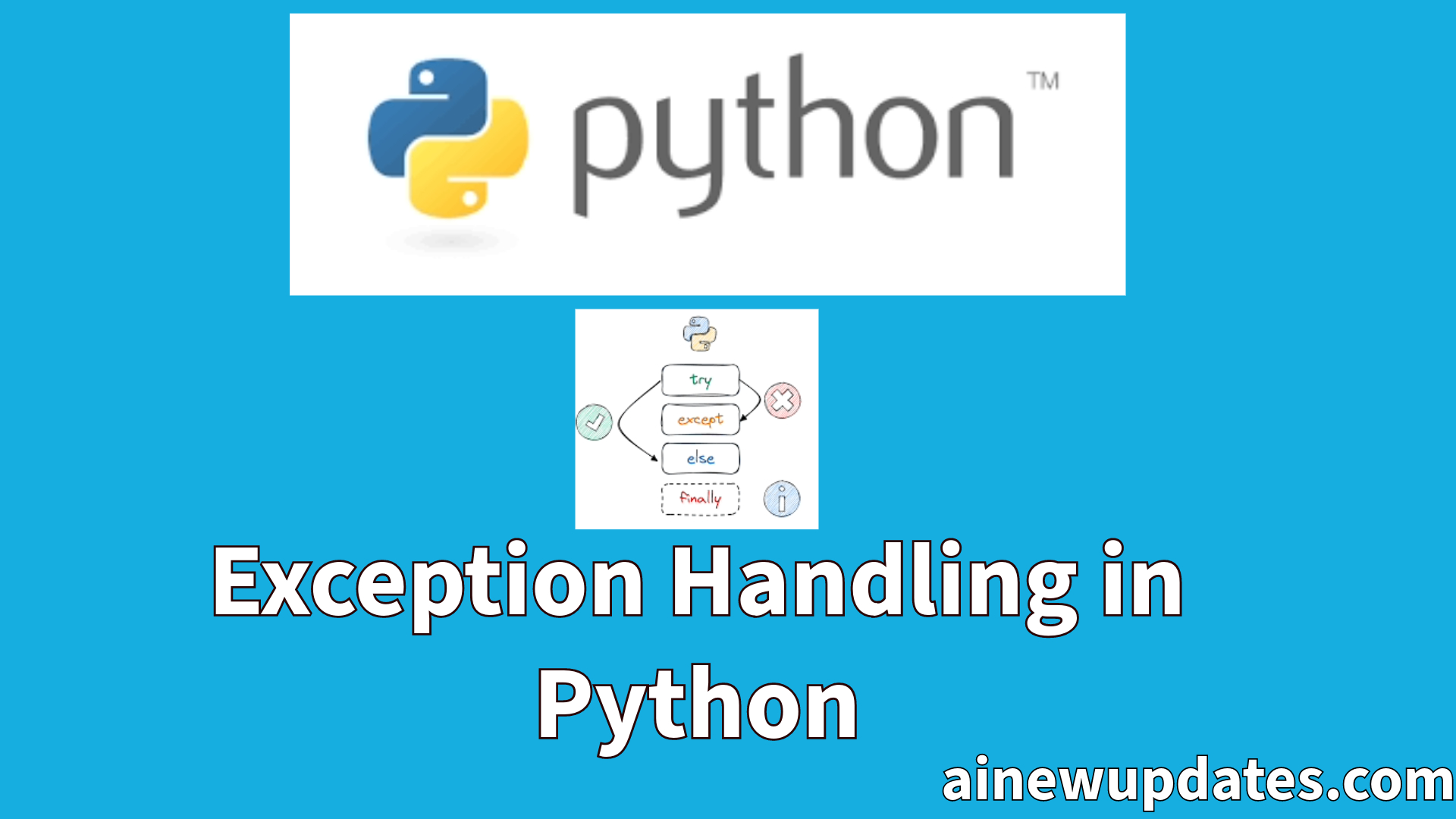Exception handling is a vital aspect of writing robust and error-tolerant Python code. It allows developers to anticipate and gracefully manage unexpected situations, ensuring that the application remains stable even when issues arise. In this blog, we’ll delve into the fundamentals of exception handling in Python, providing real-world examples to illustrate each concept.
Understanding Exceptions
1. What are Exceptions?
Exceptions are events that disrupt the normal flow of code execution. They can occur due to errors such as division by zero, attempting to access an index that doesn’t exist, or trying to open a file that isn’t present.
What is exception handling in Python?
2. Basic Exception Handling in Pyhton
The try and except blocks are fundamental to handling exceptions.
try:
result = 10 / 0 # This line will raise a ZeroDivisionError
except ZeroDivisionError:
print("Error: Cannot divide by zero.")
In this example, the code inside the try block raises a ZeroDivisionError, and the correspondingexcept block catches and handles it, preventing the program from crashing.
Handling Specific Exceptions
3. Handling Multiple Exceptions
It’s common to encounter different types of exceptions within a single try block.
try:
value = int(input("Enter a number: "))
result = 10 / value
except ValueError:
print("Error: Please enter a valid number.")
except ZeroDivisionError:
print("Error: Cannot divide by zero.")
Here, the code attempts to convert user input to an integer. If the input is not a valid number (ValueError) or if the user tries to divide by zero, the appropriate except block is executed.
4. The else and finally Blocks
The else block is executed if no exceptions occur, while the finally block always runs, regardless of whether an exception was raised or not.
try:
result = 10 / 2
except ZeroDivisionError:
print("Error: Cannot divide by zero.")
else:
print("Division successful!")
finally:
print("This always runs.")
In this example, if the division is successful, the else block is executed, and the finally block ensures cleanup or resource release.
Advanced Exception Handling
5. Raising Exceptions
You can raise exceptions explicitly to signal specific conditions.
def calculate_square_root(number):
if number < 0:
raise ValueError("Cannot calculate the square root of a negative number.")
return number ** 0.5
This function raises a ValueError if the input is negative, providing clear feedback to the caller.
6. Custom Exceptions
Creating custom exceptions can enhance code readability and allow for more specific error handling.
class CustomError(Exception):
def __init__(self, message):
self.message = message
try:
raise CustomError("This is a custom exception.")
except CustomError as ce:
print(f"Caught an exception: {ce.message}")
Custom exceptions help distinguish between different error scenarios and improve the clarity of your code.
Best Practices
7. Logging Exceptions
Logging exceptions is crucial for debugging and monitoring applications.
import logging
try:
# Some code that may raise an exception
except Exception as e:
logging.error(f"An exception occurred: {e}", exc_info=True)
This logs the exception along with the traceback, aiding in troubleshooting.
8. Keep try Blocks Minimal
Place only the necessary code inside try blocks to pinpoint the source of errors.
try:
# Minimal code that may raise an exception
except SomeException:
# Handle the exception
9. Document Exception Handling
Clearly document how your code handles exceptions for better collaboration and maintenance.
try:
# Code that may raise an exception
except SomeException:
# Handle the exception as per project requirements
Conclusion
Exception handling is an essential skill for Python developers. By incorporating these examples and best practices into your code, you can create more resilient applications that gracefully handle errors, providing a better experience for both users and developers.
More Read..
Python Database Connection :Complete Guide on Python Integration with Oracle and SQL Databases

